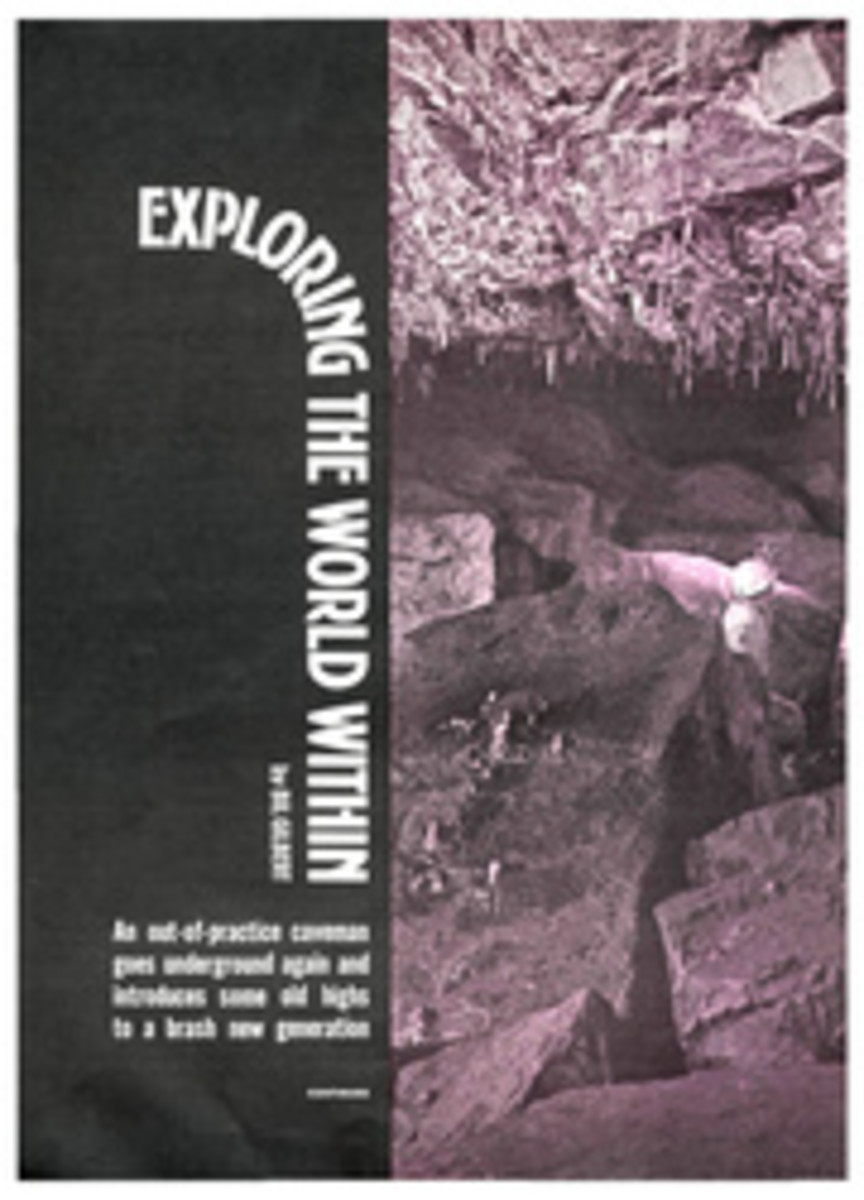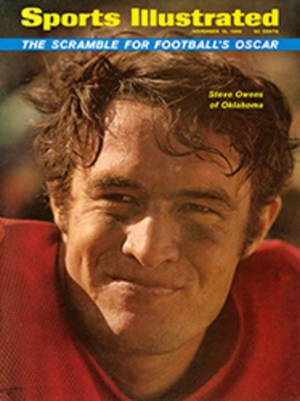
SCORECARD
COMPUTING FOR FUN AND PROFIT
For the past four seasons it has been possible to subscribe, for $50 a week, to something called the Pro Football Computer Forecast, which is based in Chicago. The idea is that a scientific fellow in a white coat feeds relevant information into a computer, which then goes clickety-clack for a while and finally regurgitates the information in the form of a sheet of paper spelling out how, taking into consideration the point spread set by bookmakers, you might come out with a fistful of weekend winners.
It sounded great to a friend of ours, and he subscribed to the service at the start of the season. Totting up the results of the past five weeks, he now finds that the computer has come up with six wins and eight losses, keeping the all-important point spread in mind. Two weeks ago was disastrous: one win, four losses.
The computer gnomes are understandably disturbed, but not enough to quit computing and collecting $50 a computation. Rather, in a spirit of dedication, the operators of the Pro Football Computer Forecast are forging sternly ahead.
"The reasons for the erratic behavior [of the teams] are hard to pinpoint," they advise their clients, "but regardless of the reasons we now feel that we must combat this rash of rapidly developing turnaround. As a result we are increasing the Alpha factor in our exponential smoothing function until the teams settle down to more steady performances."
And you should feed the computer a little more smoothing, soothing banana oil, too.
THE NEW LOOK
Basketball courts, indoors anyway, are generally made of wood flooring, and so the natural color of wood—maple or beech—is what you see now on your color-TV set. It is not spectacular enough for TV people, though; and Ed Forsythe, a Boulder, Colo. inventor who is a consultant to the DiNatale Floors, Inc. of Boston, a principal builder of portable basketball courts, has come up with what he thinks is the answer. One court he has designed would be the same color as AstroTurf inside the boundary lines, with parts adjacent to the lines in red. Red would be used also in the center jump circle and within the free throw areas. Another of his designs is what he calls "the patriotic court." Red, white and blue, naturally.
What he is proudest of, however, are new portable courts that can be put down in less than an hour as compared to the 2½ to four hours now standard. They have already had acceptance at the Salt Palace in Salt Lake City, the Arizona Coliseum in Phoenix and arenas in Greensboro, N.C., Richmond and Hampton Roads, Va. It is theoretically possible, says Forsythe, for two men to assemble one of his courts in 36 minutes, quite an advantage in those arenas where there might be a hockey game in the afternoon and a basketball game that night.
FORGOTTEN MAN
When Jerry Wolman owned the Philadelphia Eagles, until money problems forced him to sell, he would sometimes practice with them, turn up in the dressing room and sit on the bench. Now, an ex-owner, he can't even get into the stands. No tickets available, the Eagles' management tells him.
"I didn't want free tickets," Wolman says. "I wanted to purchase them. I got my check back in the mail."
BYLINE FOR JOE
Around the little town of Bainbridge, Ga., J. L. (Booney) Odom works at jobs like sweeping the county courthouse and doing errands for county employees. He is a direct and forceful man and he gets things done. He is a sports follower, too, and not long ago he read in a newspaper that none other than Joe Willie Namath was to be at a nightclub in Miami Beach.
So Booney put in a person-to-person call to the club and got Joe Willie on the telephone. Something was bothering him, he explained to Joe Willie.
In a little while Booney got a check for $275 from Namath. And now, in the Union Cemetery near Bainbridge, there is a tombstone on the graves of Mr. and Mrs. Thomas Harvey Williams, the grandparents of Booney Odom.
The last line of the carved inscription reads: PURCHASED BY YOUR GRANDSON, J. L. (BOONEY) ODOM, AND JOE W. NAMATH.
GOT YOUR GOAT?
The 600 members of the Lahinch Golf Club in County Clare, Ireland don't have to tap a barometer to figure out what the weather is likely to be on any given day. In lieu of a barometer there is a sign in the clubhouse that says SEE GOATS. A glance through a clubhouse window provides the necessary information. If the three goats in question are grazing nearby, you can expect rain. If, on the other hand, the goats have wandered off to a distant fairway, you can leave your rain jacket in the clubhouse because the weather will be clear.
"The method has proved absolutely accurate," claims a club official. If he's telling the truth, it puts Lahinch's three goats way ahead of the weatherman, as most golfers, to their drenched sorrow, can testify.
And if this catches on, you can forget about carbon-fiber clubs, solid golf balls or artificial-turf tees as the most up-to-date thing on a golf course. It'll be goats, baby.
FOOTNOTE ON FLAGS
Those penalty "flags"—actually they are more like handkerchiefs—one sees flying through the air at football games are not the same in professional and college football.
The pros use an 18-by-18-inch nylon cloth colored "Saturn gold" whereas, starting this year, the college officials have been using a 14-by-14-inch red and white cloth. Previously it was all red. Each pro official carries one flag whereas the colleges use two—on the chance that there might be two infractions on one play. For out-of-bounds plays the colleges use a 6-by-6-inch blue marker cloth. Pro officials generally use their white caps to mark these. Before 1946 all officials carried a small horn as well as the flags and blew it whenever there was a penalty. At that time only the referee had a whistle. Now all officials carry one.
The origin of the term "penalty flag" seems to be buried in the past. NFL people guess it may have come from rugby. College authorities just shrug.
FOR HUNCH PLAYERS
Winner of the ninth race at Churchill Downs on Halloween Eve was a 3-year-old maiden who paid $10.80. Name: Great Pumpkin.
BLOOD TELLS AGAIN
Oldtimers and especially old Harvards will remember the name of Charley Brickley, the legendary dropkicker. He dropkicked five field goals against Yale in 1913. Now we have John Charles Brickley, University of Rhode Island freshman and a very respectable dropkicker himself. He is Charley's grandson.
John is a substitute linebacker and an occasional cornerback and placekicker on the URI freshman team. His father, also John, started him kicking at his home in Bronxville, N.Y. at the age of 7 or 8. He learned placekicking and dropkicking at the same time, the latter because it is in the family tradition and never mind how the shape of the ball has changed.
"At first," John says, "I wasn't very aware of what my grandfather had done, except that my father told me about him, that he was a pretty famous dropkicker at Harvard."
Growing up, John put more emphasis on placekicking but a few years ago he returned to practicing the dropkick as well. It is not at all easy with the more pointed modern ball, he says, because one must "drop it straight and put more drive into it."
At Bronxville High he was his team's quarterback and placekicker. As a junior he scored 24 out of 28 points after and made 18 of 25 as a senior.
"Just once I dropkicked a point after," John recalls. "Last year against Dobbs Ferry my coach wanted to see if I could do it, and I did. But it wasn't that important. We won 30-0."
He was accepted at Harvard but did not think he was "academically oriented for them and, besides, I think there would have been a lot of pressure on me there."
Is he anxious to start the Brickley dropkick era again?
"I hope to," he said. "In fact, I'm eager."
ABOUT THE BIRDS AND THE BEARS
There are some 10,000 polar bears left in the world, 6,000 of them in the Canadian Arctic. A century ago they numbered in the hundreds of thousands. No one knows very much about them, except that they are a dwindling lot, presumably headed for extinction.
At this time of year many show up mysteriously in a few places like Churchill, on Hudson Bay. They come toward the end of October and are all gone by the third week of November. Efforts are being made to trace their wanderings by means of radio collars (SI, Aug. 5, 1968), but no consistent patterns have been established.
Efforts are being made, too, to save them, but with diminishing hope. Now the polar bear has become a victim of DDT. Unexpectedly high concentrations of the chemical, which is scarcely used at all in their habitat, have been found in fat samples taken from polar bears killed in a remote Arctic region.
Nor are polar bears the only threatened species in the Arctic. In Alberta, a province famous for bird hunting, Dr. J. Donovan Ross, minister of lands and forests, has canceled the 1969 season on Hungarian partridge and pheasant because of high levels of mercury found in their carcasses. The birds have been eating seed grain treated with a mercury compound designed to resist insect and fungus pests. As much as 80% of Alberta grain is so treated.
There is some hope. An act to control the use of agricultural chemicals will be considered by the next session of the provincial legislature. U.S. legislatures, please copy.
ARF
A Memphis man has named his foreign car "Dog." It isn't that he dislikes the car, he explains. It's simply that ever since he was a small boy he has always wanted a Rover named Dog.
CHINESE JUNK
Litterbugs and pollutionists get off with relatively minor penalties in the U.S. but, according to a warning from the American Automobile Association, not so in Taipei, capital of Taiwan. There, tossing a beer can out of a car or ignoring a smoky exhaust can get you life imprisonment.
LONELINESS OF A DISTANCE RUNNER
The expulsion of Emil Zatopek, long distance runner, winner of four Olympic gold medals, from the Czechoslovakian Communist Party, in which he had taken a stance against the Soviet Union, may not be the last among athletes who have opposed the Russian takeover of their country. Next best bet: Vera Caslavska, blonde darling gymnast of the Mexico Olympics, in which she won four gold medals.
ILLUSTRATION
THEY SAID IT
•Jim Sweeney, Washington State football coach whose team has a 1-6 season record, after the regents tore up his one-year contract and wrote another for three years: "Did they think I might go somewhere else?"
•Adolph Barela, recreation supervisor at the New Mexico State Penitentiary: "We have some good players in all sports, but if we have a losing season I might have to go recruiting."
•Roland Ortmayer, in his 21st season as football coach at La Verne (Calif.) College, after watching his team blanked 20-0 by Cal Western University: "I don't think our offense could get a first down against high grass."

